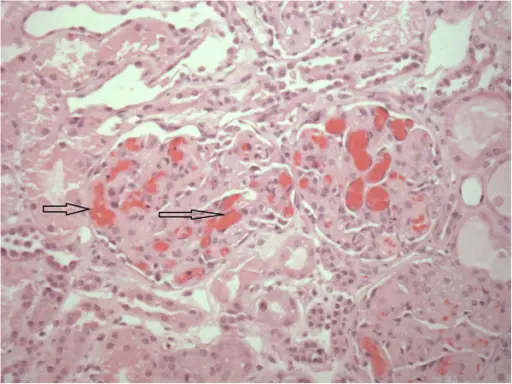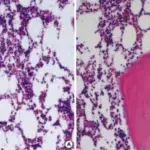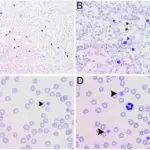Uremic syndrome is a clinical condition characterized by advanced kidney failure allied to thrombocytopenia and microangiopathic hemolytic anemia.
What is the Pathology of Uremic Syndrome?
The pathology of the uremic syndrome is: disorder classified into two core categories, dependent on whether it is linked with Shiga toxin (Stx) or not. Typical (Stx–associated) HUS and atypical (non–Stx-associated) HUS.
-Etiology: The cause of uremic syndrome is infections, pregnancy, and puerperium.
-Genes involved: None.
-Pathogenesis: The sequence of events that lead to uremic syndrome as the result of damage to endothelial cells.
-Morphology: The morphology associated with uremic syndrome shows diffuse thickening of the glomerular capillary wall.
-Histology: The histology associated with uremic syndrome shows fibrin thrombi.
How does Uremic Syndrome Present?
Patients with uremic syndrome typically have no sex prevalence present at an age range of childhood to adulthood. The symptoms, features, and clinical findings associated with uremic syndrome include hypertension, edema, fluid overload, severe pallor, seizures, anuria, irritability, and lethargy.
How is Uremic Syndrome Diagnosed?
Uremic syndrome is diagnosed through laboratory Studies- BUN, serum creatinine, serum electrolyte levels, and urinalysis. Peripheral smear decreased platelet counts, ADAMTS-13 activity: imaging studies- kidney ultrasonography.
How is Uremic Syndrome Treated?
Uremic syndrome is treated through medical care including monoclonal antibodies (eculizumab and ravulizumab) corticosteroids, and antioxidants. Plasma therapy, immunoglobulin (IgG), antiplatelet agent, fibrinolytic agents.
What is the Prognosis of Uremic Syndrome?
The uremic syndrome prognosis is fair. Uremic syndrome is associated with recurrence, progressing to end stage renal disease.



